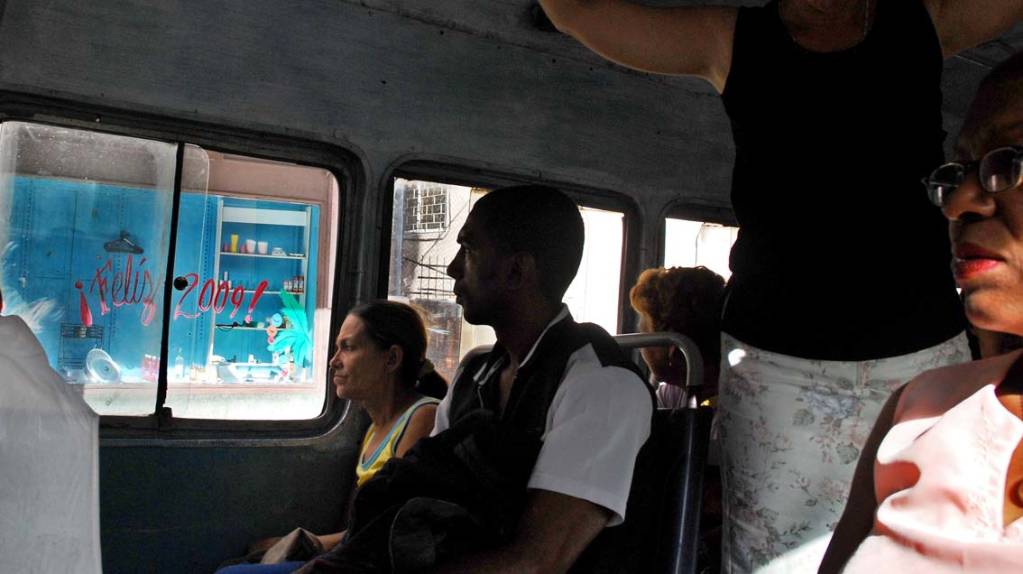The Problematic Life of a Bus Driver
Daisy Valera

Bus drivers in Havana have become a center of controversy in our lives these days.
Beyond making us listen to their musical preferences at full volume, drivers and their problems have become an issue even in the official press.
Simply put, it’s being asked why passengers are now choosing to pay the drivers instead of depositing their fares in the collection boxes.
The tendency to hand fares directly to the driver began when the newly imported buses arrived with money boxes (previously there was someone who collected the fares and made change for people boarding these types of vehicles).
A bus ride only costs 40 cents, but since it’s exceedingly difficult to get change in Havana, people are forced to pay more than twice as much because the smallest currency people usually carry is a peso [equivalent to 100 cents].
In my opinion, what happened is that people started to react out of solidarity when confronted with such an uncomfortable situation.
This is an expression of solidarity with the drivers because people know that these workers —like themselves— certainly aren’t paid a wage that’s enough to live on. Therefore, if they have to pay a whole peso anyway, they prefer to pay the driver as a form of protesting against the State’s tacit price increase.
There are some people who see this act as shameless disrespect, a contribution to social disorder or an affront to the State.
I definitively disagree with these critics, since there are factors that always escape the attention of those who make such arguments.
In first place are everyone’s paltry wages; followed by the fare increase, which is not explicit, but real; and the failure to respond to the citizens of the capital, who have complained about this situation.
Instead of attacking the supposedly “shameless bus drivers” —which is the only thing these critics do— they should look for solutions so that no one has to pay more than 40 cents for a ride. Alternately, they should report where the money that is collected in the money boxes goes so that everyone can have clear knowledge of what’s happening with Cuban transportation.






One of the things they do in the US is allow various classes of riders to purchase monthly “bus passes.” For example, students and senior citizens may pay a standard fee and get a card valid for a given month. When these individuals wish to ride–no matter when or to where–they simply show the driver their pass, and the driver allows them to board.
Municipal bus drivers used to wear an apparatus on their front belts that allowed them to make change more rapidly. After many decades of this–and lots of robberies of drivers–it was finally decided to require riders to have either a bus pass or exact change. The days of the bus drivers wearing those odd-looking change apparatuses are long gone.
It would seem that such matters as change for fares, bus passes, etc., are routine administrative problems. Pehaps those running the transit show in Havana are fit for a different line of work.
It has been said: “That system is best which is administered best.”